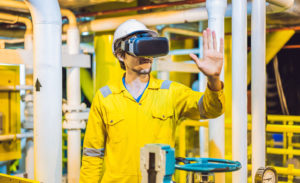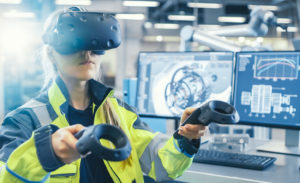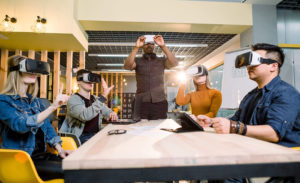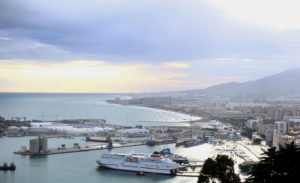To be at the cutting edge of shipbuilding and technology, we need to be aware of what is on the horizon for the future of our industry. The articles and papers below are how we share our findings to the rest of the industry through technical magazines and academic conferences. Read for yourself what the future holds.

The Evolution of Virtual Reality in Shipbuilding
Virtual Reality (VR) has gone from being science fiction, to being realized in the research lab, to being treated as a toy, to being used in practical applications, including shipbuilding. This paper examines the history of VR technology as well as its current state.
Learn More
The Digital Twin Journey
The value of a complete and accurate digital representation of a ship that is available and maintained throughout the construction and operation of the vessel is being increasingly recognized. This ‘digital twin’ ideally contains all relevant information about the vessel and is contained within a single software platform.
Learn More
2D, 3D and Virtual Reality: Creating the Natural Way to Work
Working in an interactive 3D environment is more intuitive than interpreting 2D drawings but the workflow to support 3D and VR must be cost-effective and natural to be adopted. Using case studies from shipyards around the globe as well as ongoing research, this paper will explain how the key is creating associative linkages supporting both legacy 2D workflows and technologies such as PLM and Virtual Reality.
Learn More
Democratization of Virtual Reality in Shipbuilding
In theory, 3D Virtual Reality (VR) models provide numerous benefits to shipbuilders. Many authors have highlighted potential use cases including design review, customer review, supply chain collaboration, project scheduling and shop floor 3D. However, in practice the technology, including generation of the virtual models from existing CAD tools, is too costly, complex, and rigid to be implemented across all segments of the industry.
Learn More
CAD ERP Integration
Shipbuilding CAD/CAM systems are a rich source of data that can be consumed by other business processes. In shipbuilding, managing and tracking the procurement and consumption of materials via an Enterprise Resource Planning (ERP) system is a critical portion of a shipyard’s overall IT infrastructure.
Learn More
Industry and Government
This paper will explore the role of industry, navies, and government in implementing industry-wide changes to shipbuilding software tools in an effort to reduce fleet acquisition costs. The results achieved through a series of collaborative US Navy National Shipbuilding Research Program (NSRP) projects involving many US shipbuilders will be highlighted.
Learn More
2D in a 3D World
Classification drawings have traditionally been developed in 2D software (e.g. AutoCAD) but separate applications are used for the development of a 3D design and engineering model. This results in duplicate effort, rework and error. To try to solve this problem, several shipbuilding specific software packages now can generate class approval drawings from the 3D model. However, these programs lack the detailing capabilities offered by AutoCAD so in practice, AutoCAD is still used as well.
Learn More
Cutting Edge Technology
Despite being an industry full of bright and qualified people, the shipbuilding industry is often slower to adopt and develop new technologies compared to other sectors such as the plant, aerospace and automotive industries. This paper will explore the trends in the relative adoption of a number of technologies including laser scanning, digital prototyping and shop floor 3D.
Learn More
Best of Breed Software
The purpose of this paper is to explore the benefits and challenges inherent in a recent shift in how Integrated Shipbuilding Environments (ISEs) are created and deployed amongst the world’s leading shipbuilders, offshore experts and marine-focused software vendors. This paper will also outline a case study in which this approach has been employed.
Learn More
Automation of Oil Rig Fabrication
Despite worldwide financial crisis, a significant amount of oil rig fabrication work continues to prosper due to the huge order book backlog. Whilst some projects have been canceled or delayed because of financing, the on-going projects are now under bigger pressure to save time and cost of fabrication.
Learn More